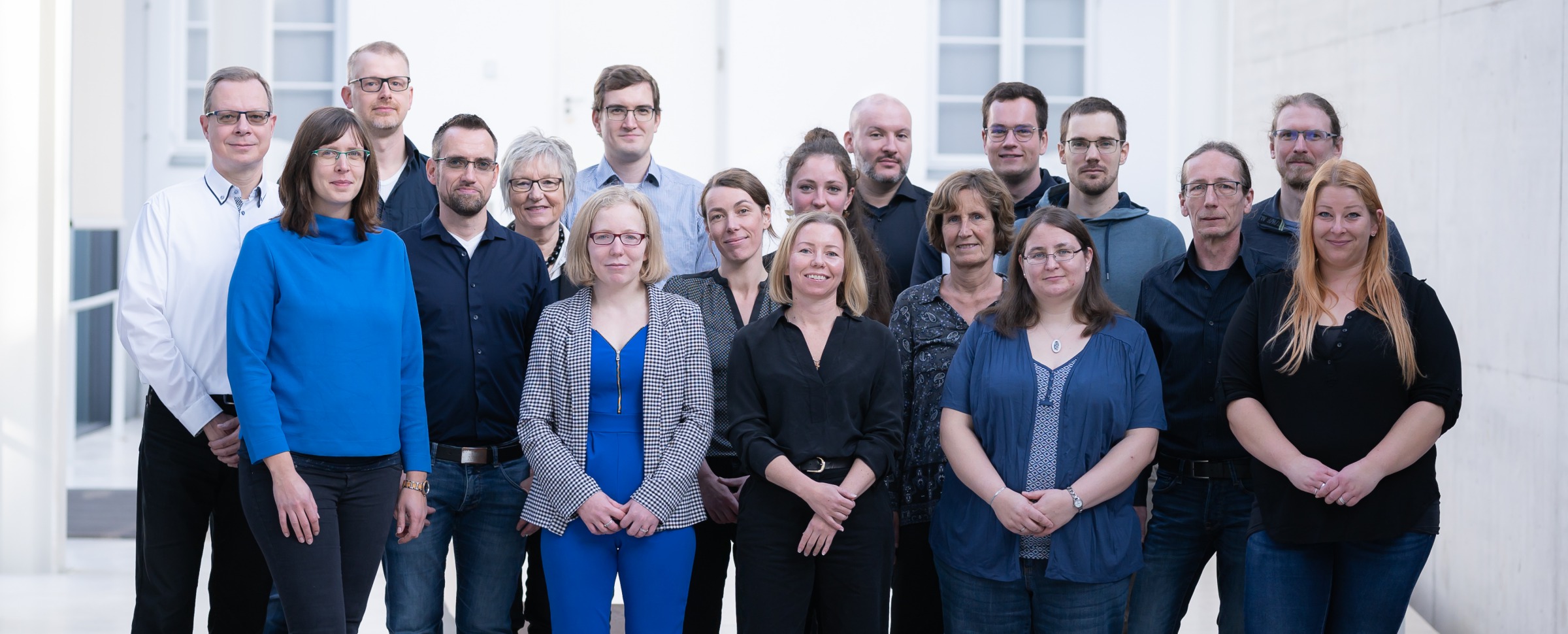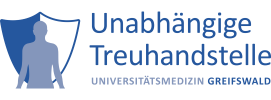
Die Datentreuhänder.
Mit 10 Jahren Erfahrung unterstützt die Treuhandstelle der Universitätsmedizin Greifswald die medizinische Forschung in Europa. Personenidentifizierende Daten sind sensible Informationen. Der Zugriff auf diese Daten ist ausgesprochen schützenswert — das gilt insbesondere für die Forschung mit Patientendaten in Studien und Registern. Die organisatorisch selbständige Treuhandstelle entwickelt und betreibt zum Schutz dieser Daten spezialisierte Software und bietet damit datenschutzkonforme Lösungen für die medizinische Forschung. Als Datentreuhänder bilden wir die Brücke zwischen Studienteilnehmern, Forschern und Projektpartnern und schaffen damit Vertrauen, denn
nur mit Vertrauen ist medizinische Forschung erfolgreich.
Sie planen für eine Studie oder ein Forschungsvorhaben eine datenschutzkonforme Speicherung und Nutzung personenidentifizierender Daten? Sie suchen nach Werkzeugen, die Sie bei der digitalen Erfassung und automatisierbaren Verarbeitung von Forschungsdaten unterstützen?
Sie sind Teilnehmer einer Studie oder planen, an einer Studie teilzunehmen? Sie haben eine Einladung für eine Studienteilnahme erhalten und wollen sich über die Speicherung und Verwendung Ihrer Daten informieren?
Sie sind an der Durchführung einer Studie beteiligt und suchen z.B. nach Dokumentation und Beschreibungen von Abläufen (SOPs)? Sie benötigen Zugang (Login) für die Datenerfassung Ihres Projektes und suchen den entsprechenden Antrag?
Die Treuhandstelle in Zahlen
Stand Februar 2024
Pseudonyme individuell erzeugt
Teilnehmer sicher gespeichert
Einwilligungen digital erfasst
Wir suchen Unterstützung für unser Team
Die Treuhandstelle der Universitätsmedizin Greifswald schafft Datenschutz-konforme Lösungen für die medizinische Forschung und führt mehrere deutschland-und EU-weit agierende Forschungsprojekte im Bereich der Medizininformatik durch. Wir suchen aktuell Verstärkung für unser Projekt- und Entwickler-Team. Du arbeitest gern mit Entwicklungs-Frameworks und hast eine Vorliebe für elegante und nachnutzbare Problemlösungen? Dann wäre [...]
THS Community Dialog am 20.03.2024
Seit September 2020 bieten wir Anwendern unserer Werkzeuge und potentiellen Interessenten eine zentrale Anlaufstelle um Fragen zu stellen, Hintergründe zu verstehen und Erfahrungen mit anderen Anwendern zu teilen. Dieser THS Community Dialog bildet die Basis für den Aufbau einer gemeinsamen FAQ in unserem Community-Bereich. Die Teilnahme ist kostenfrei. Den [...]
Revision der neuesten Bugfix-Releases von E-PIX und gICS
Aufgrund einer inkompatiblen Version der beiden Module "Notification-Client" und "Notification-Service" in den Ende Januar bereitgestellten Releases von E-PIX und gICS, war es erforderlich diese Module zu ersetzen und eine zwar inhaltlich gleiche, aber neue Revision der Releases inklusive einiger weniger Dependency-Updates zusammenzustellen. Die revisionierten Releases sind wie gewohnt [...]
Offizieller Abschluss des Kommentierungsverfahrens: Release der gICS-Schnittstellenspezifikation
Im Rahmen des Anfang 2024 in Anlehnung an die Abstimmungsregeln von HL7 Deutschland durchgeführten Kommentierungsverfahren (Ballot) haben uns Hinweise und Anregungen von einigen Konsortien der Medizininformatik-Initiative (MII) erreicht. Die Kommentare wurden entsprechend bearbeitet. Das aktuelle Release des Implementierungsleitfadens für gICS ist nun offiziell veröffentlicht: ths-greifswald.de/gics/fhir/ig/stable Der gICS-Implementierungsleitfaden beschreibt, [...]
Neue Bugfix-Releases von E-PIX und gICS frei verfügbar
Seit heute stehen die neuesten Releases von E-PIX und gICS für die Community zum freien Download bereit. Vielen Dank für die detaillierten Rückmeldungen aus der Community, die wir in diesen Bugfix-Releases berücksichtigt haben. Die Tools werden mit dem ebenfalls aktualisierten TTP-FHIR-Gateway und dem um Basic-Authentication (für den MQTT-Consumer) [...]


